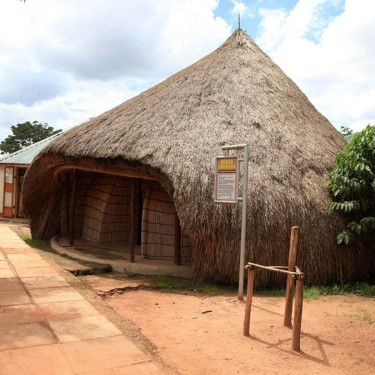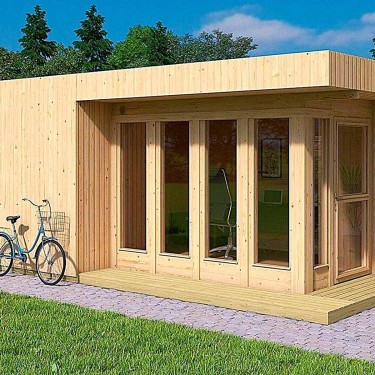See how close people came to predicting how homes would look in the future.
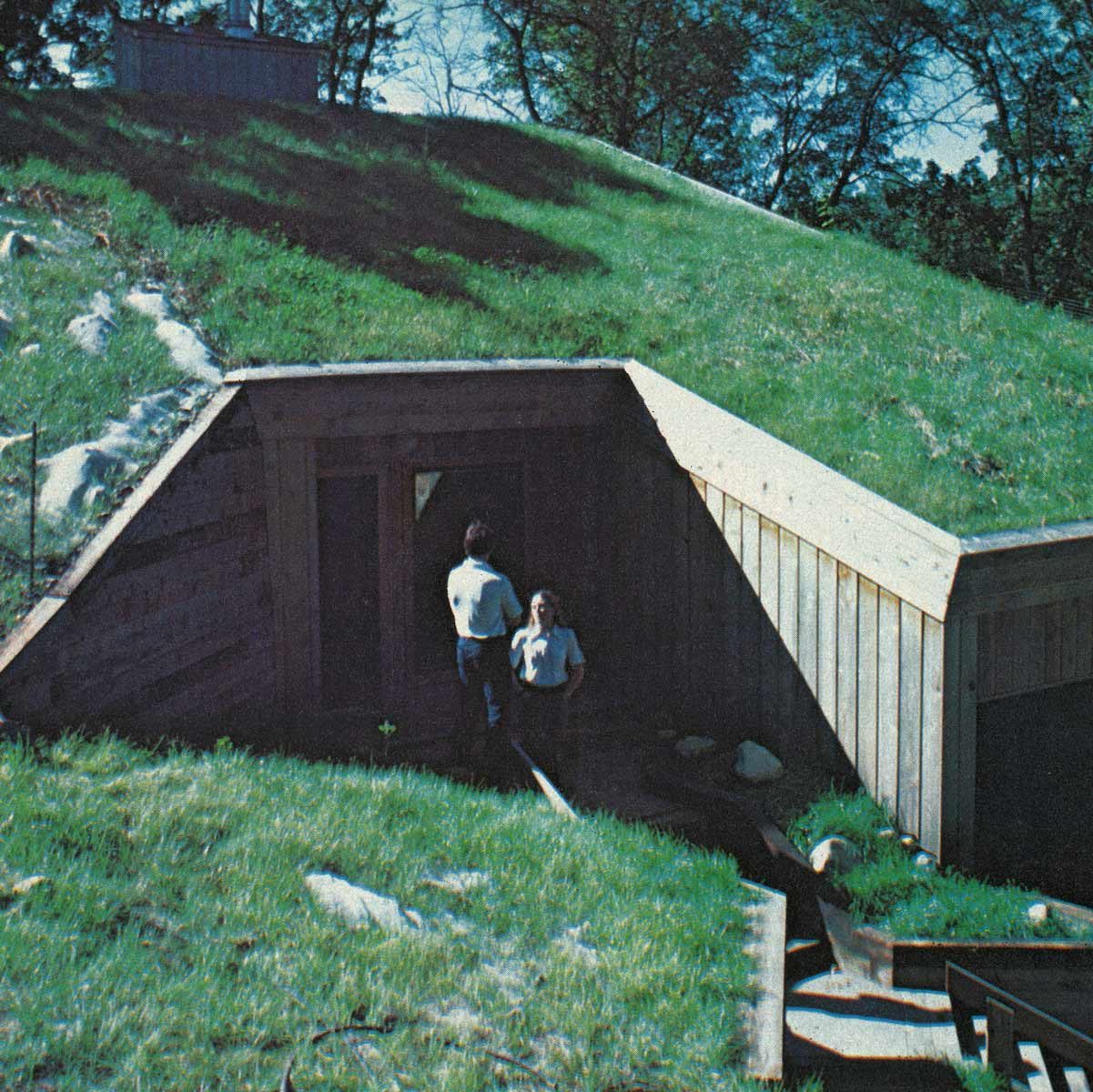
Underground Home
In 1980 we featured the “Underground Home” a residence in Burnsville, Minnesota. At that time around 3,000 people owned underground homes. Don Mosch took part in pioneering the housing concept perfect for an energy conscious era. It was one of seven homes built and tested by the Underground Space Center at the University of Minnesota.
It was a three bedroom, 2,000-square foot home that held a number of temperature sensors and gauges to measure humidity inside and out, as well as calculate energy consumption to the last watt. Some years later we now have these amazing devices that will turn your abode into a smart home.
The house faced south and was surrounded by a berm. It reportedly cut heating costs by 50 to 85 percent. The underground homes were nearly hurricane and tornado proof, as well as fireproof. Because of that, insurance costs dropped 35 percent. The cost to build the home remained on par as conventional homes. Here’s how to cut down your heating bill in a conventional home.
Much of the home was built with concrete, which presented problems of its own. Plus, once the home was built, there was no chance for additions.
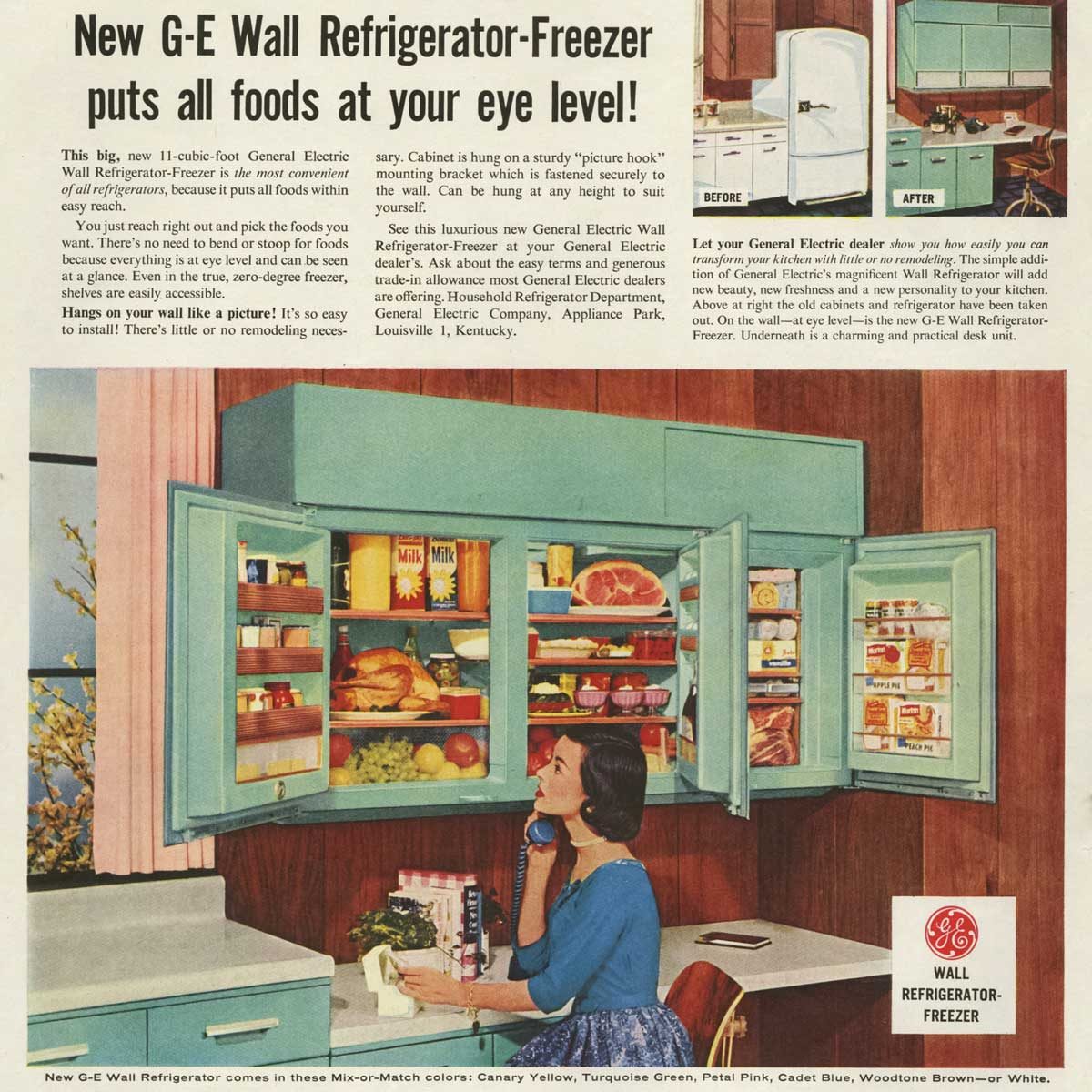
Kitchen of Tomorrow
Lifemagazine opined on “kitchens of tomorrow” as far back as 1943 in a famous spread. A sleek kitchen where equipment disappeared into cabinets and counters was among the biggest innovations. H. Creston Doner designed the kitchen and it was built by the Libbey-Owens-Ford Glass Company in Toledo, Ohio. The color of this kitchen will certainly remind you of grandma’s kitchen, just like these colors you don’t see in kitchens anymore.
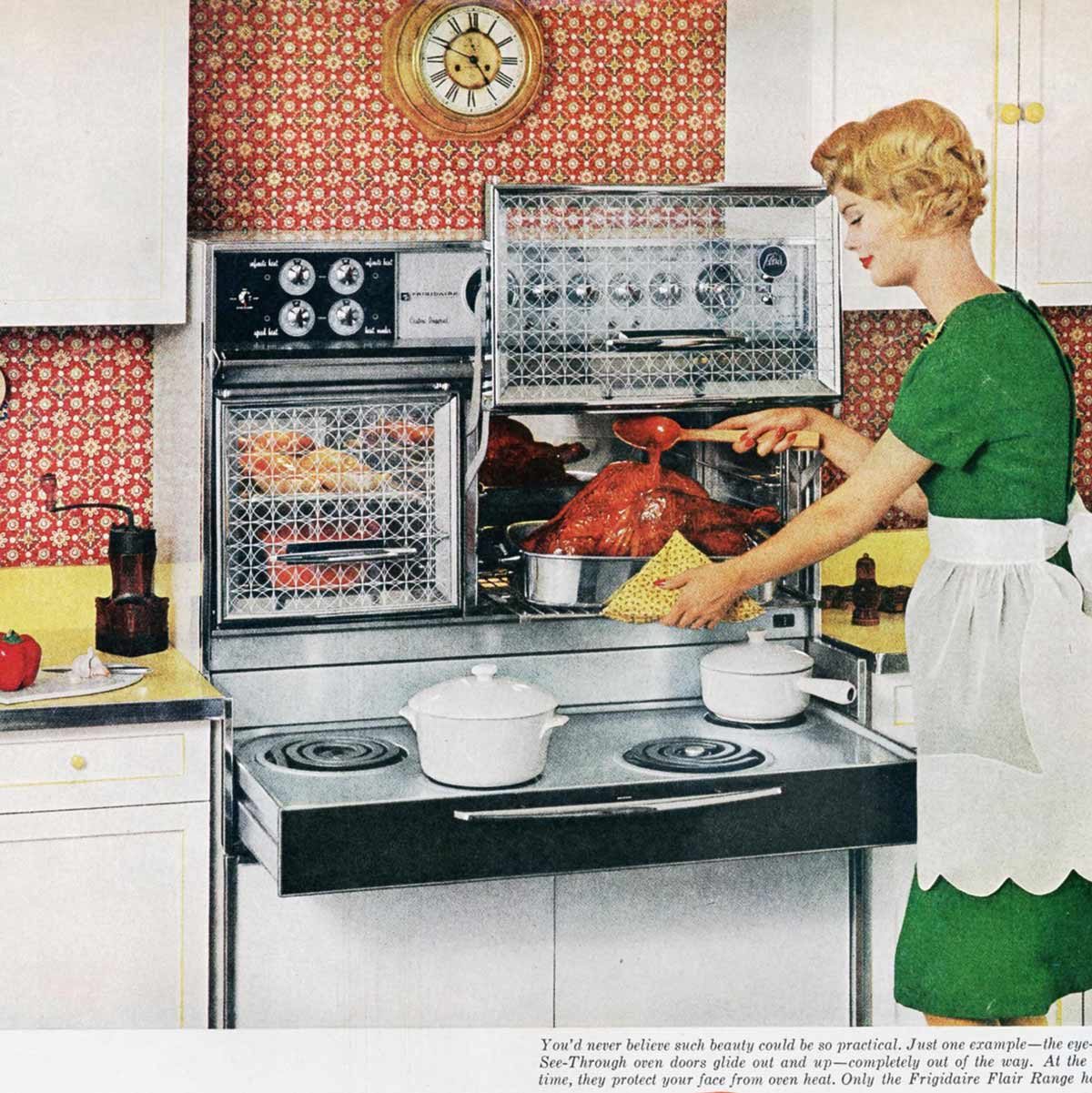
Miracle Kitchen
Sixteen years laterLook magazine showed off the “miracle kitchen” and introduced the world to a floor-cleaning robot. We’ve now got the Roomba and hundreds of other incredible home technology products.
The kitchen included a television set for entertainment and a smaller set that allowed people to check who’s at the door or look in on the baby in the nursery. You can check out the console that operated everything in this video.
Elsewhere in the kitchen, beverages dropped down from a cabinet with a wave of the hand and allowed you to pick the type of ice you wanted from an ice maker. The video also touts that you could have piping hot coffee at anytime. The automatic drip coffee maker arrived on the market a couple of decades later in the 1970s. There was even a station where fruits and vegetables got peeled automatically.
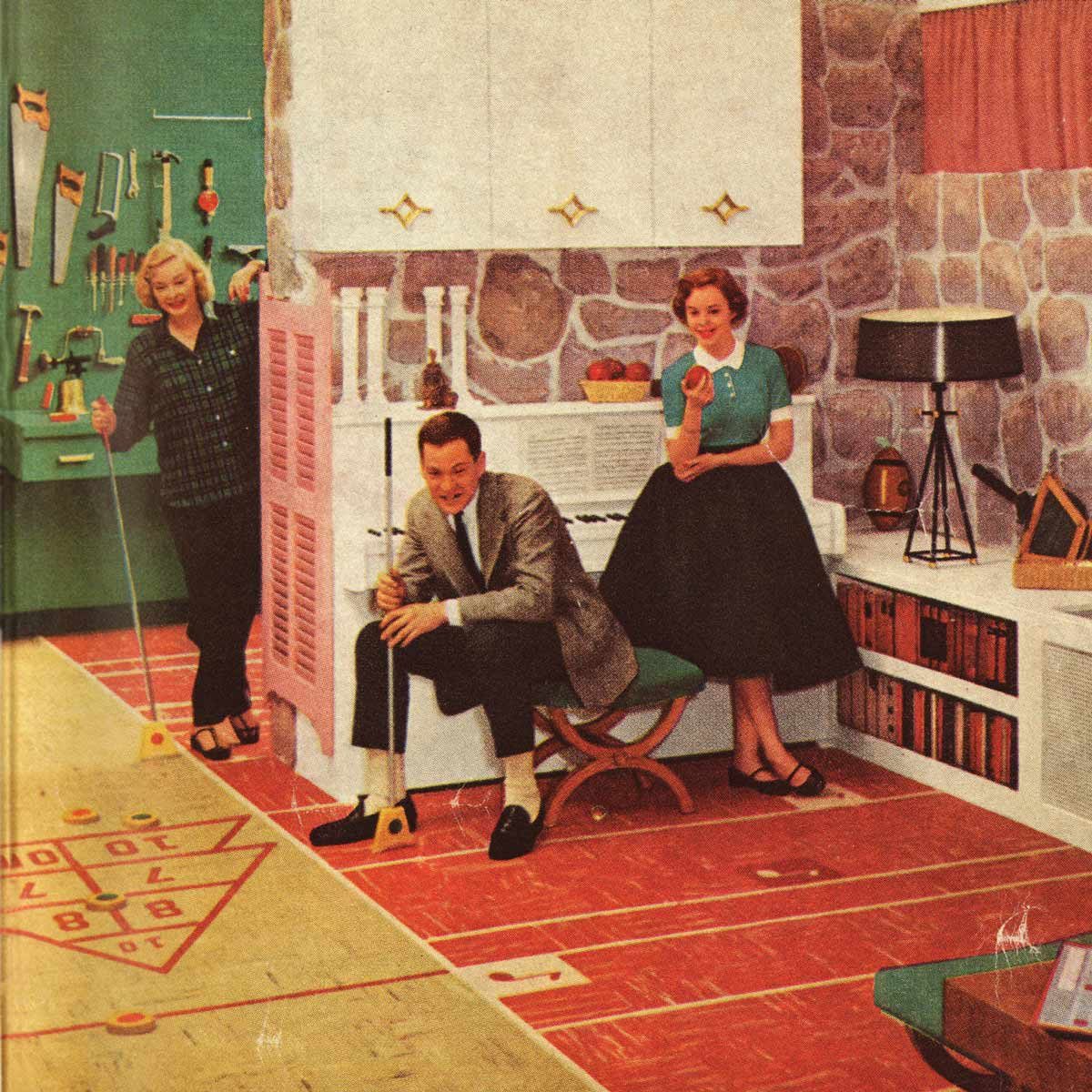
Shuffleboard Courts
Shuffleboard courts popped up all over the place back in the 1950s but the game never really took off. A number of old school gymnasiums, hotel pool areas and cruise ships still have shuffleboard courts. Tabletop shuffleboard has become en vogue lately as a bar game. Our 1958 cover featured a court in the basement as part of an entertainment space. Tile companies sold the courts, which could be laid fairly easily.
Let the games spill out to the backyard with these 12 tremendous games you can play at home.
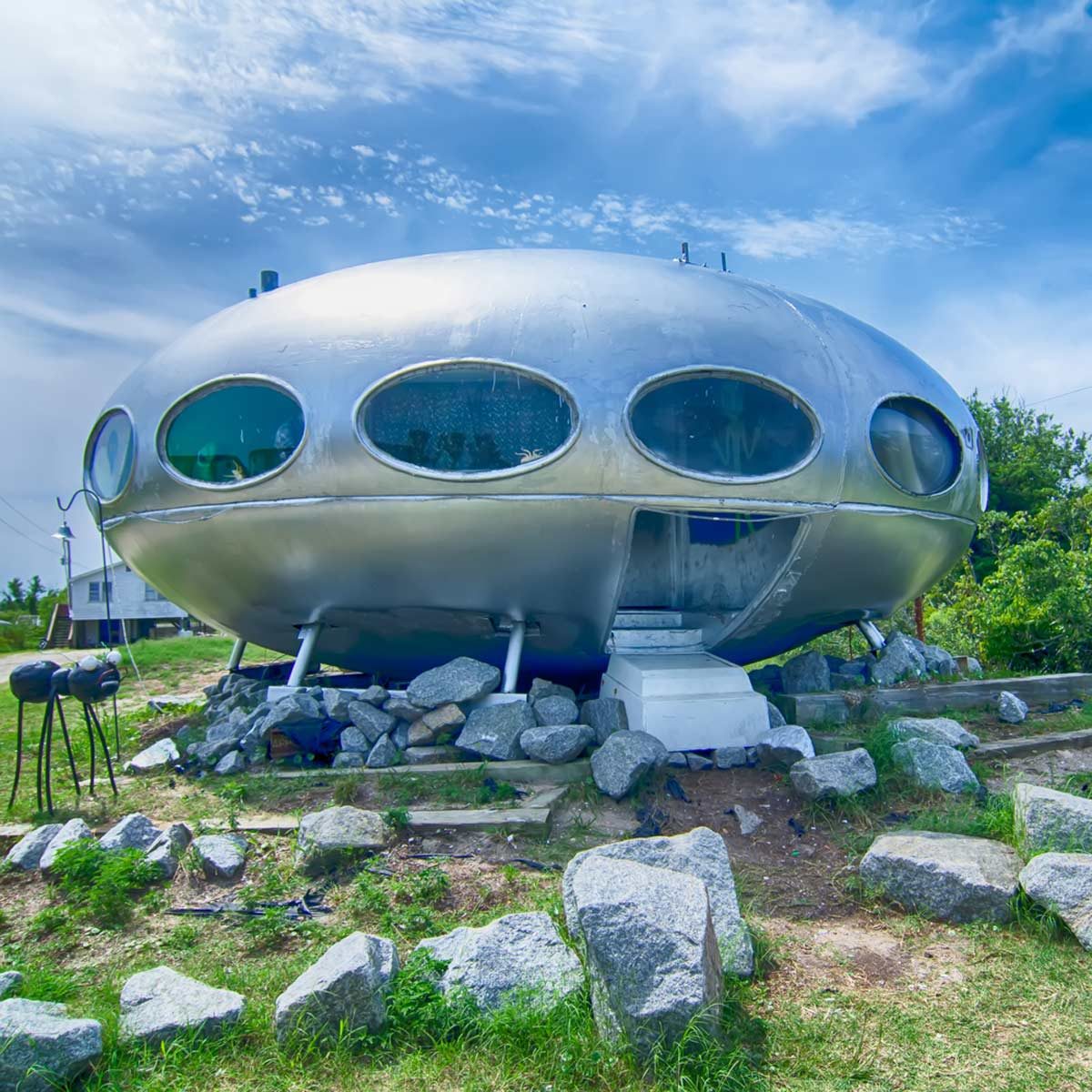
Futuro House, Frisco, North Carolina
The Futuro House, designed by Matti Suuronen, a Finnish architect, back in late 1960s and early 1970s. Fewer than 100 are thought to have been built and there are 80 remaining units. Seventeen Futuros have been demolished but those that remain span the globe. They were made with fiberglass-reinforced polyester plastic and designed as a ski chalet. It stood 14 feet tall and had a diameter of 26 feet. Eight people could fit inside. The Futuro house was thought to be able to get people into remote locations, kind of like these 50 extremely remote castles.
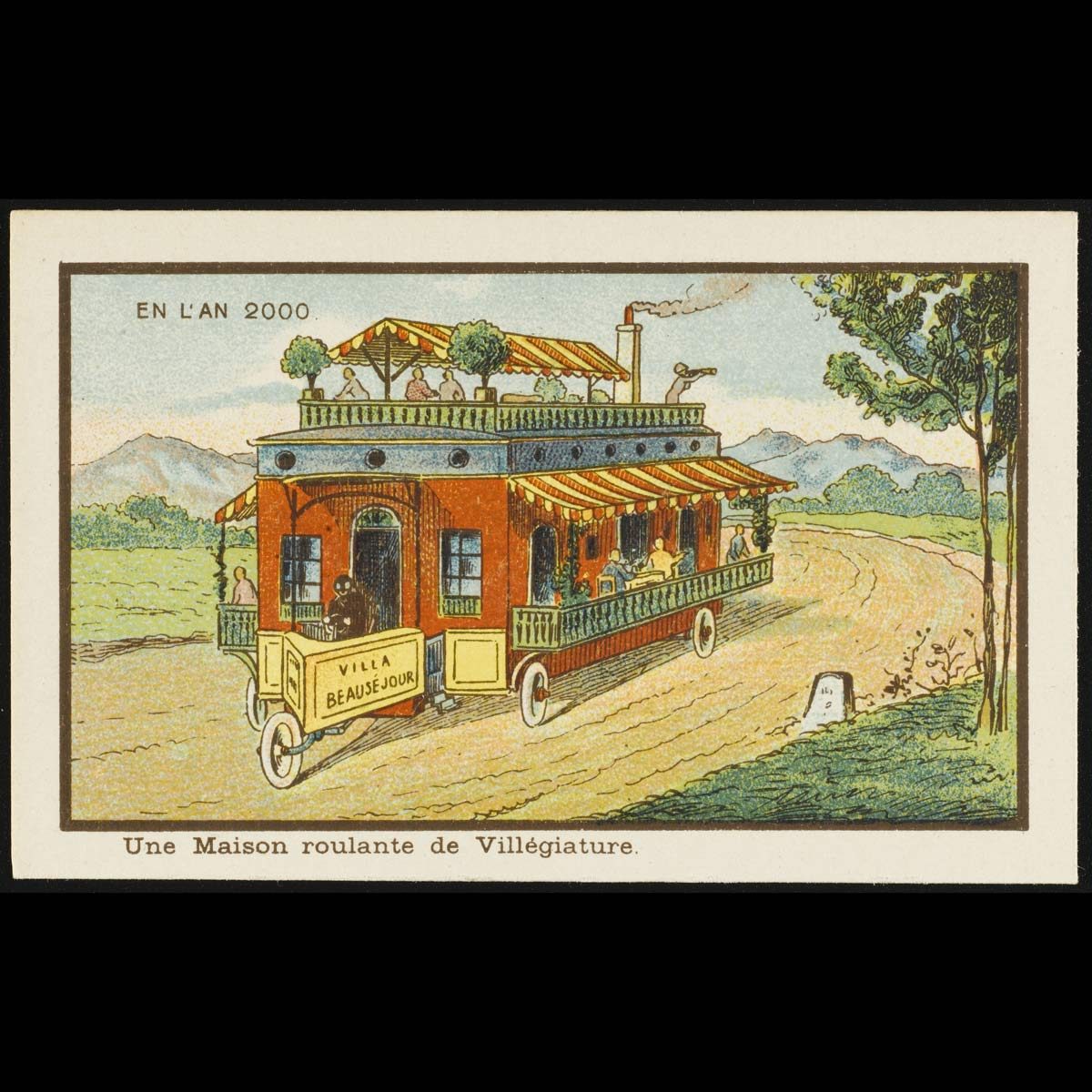
Futuristic Mobile Home from 1899
More than 100 years ago this illustration provided a concept drawing of future RVs or even mobile homes. As transportation evolved, it got people to thinking they could create a house on wheels or in this case, a cafe of sorts. If you’ve ever considered RV living, you’re going to want to know the best states for RV life.
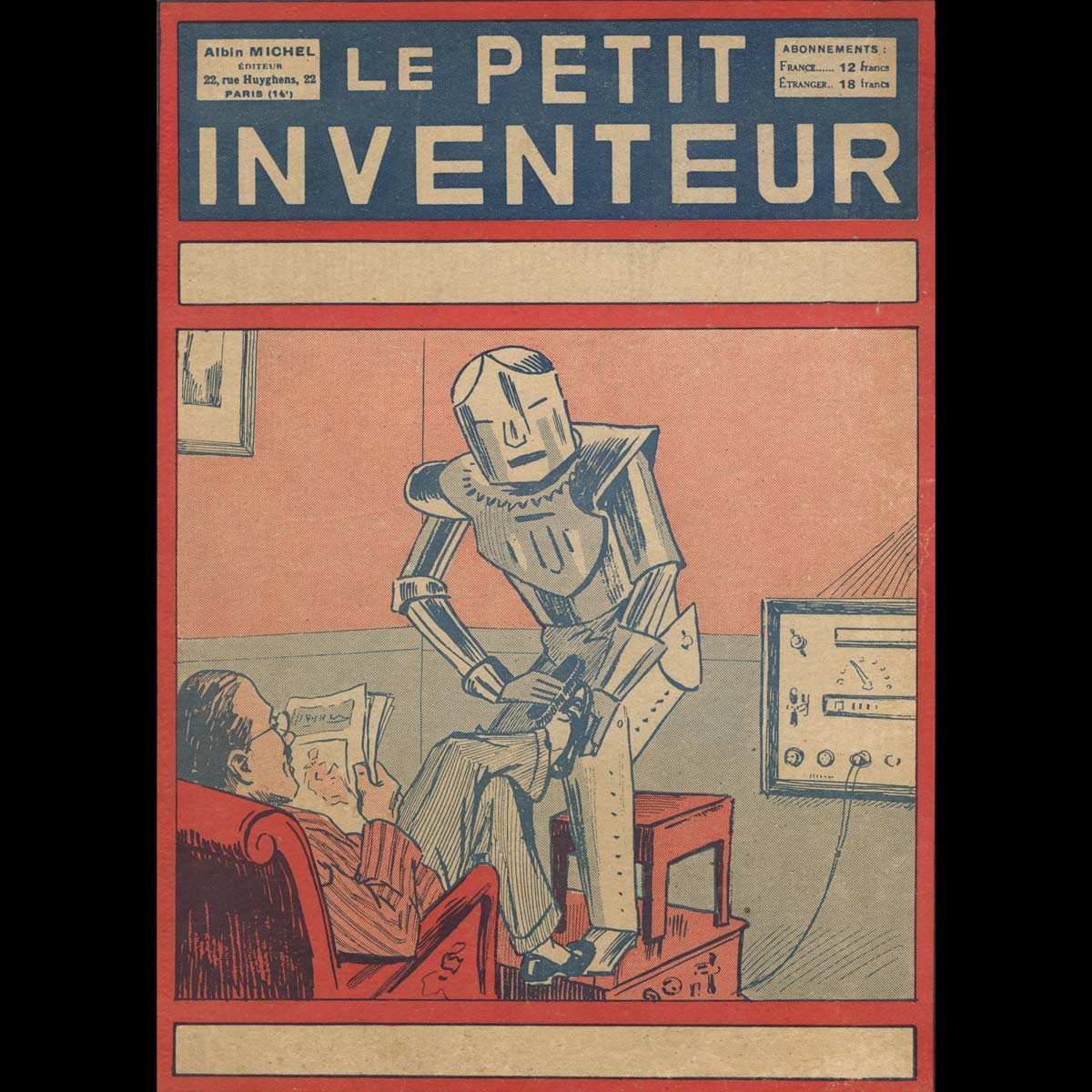
Robot Servants, 1929
The science-fiction playR.U.R by Czech writer KarlČapek came out in 1921 and in its wake came a lot of machinations about robots. The play begins in a factory that creates robots, butČapek’s robots were more humanlike than mechanical like the one depicted in this illustration. But as wealth grew prior to the stock market crash of 1929 people started to believe that someday there’d be robots to complete much of the mundane housework they didn’t care for doing. This robot shines a man’s shoes. Robots have invaded the house nearly 100 years later and these 14 robots make a huge difference.
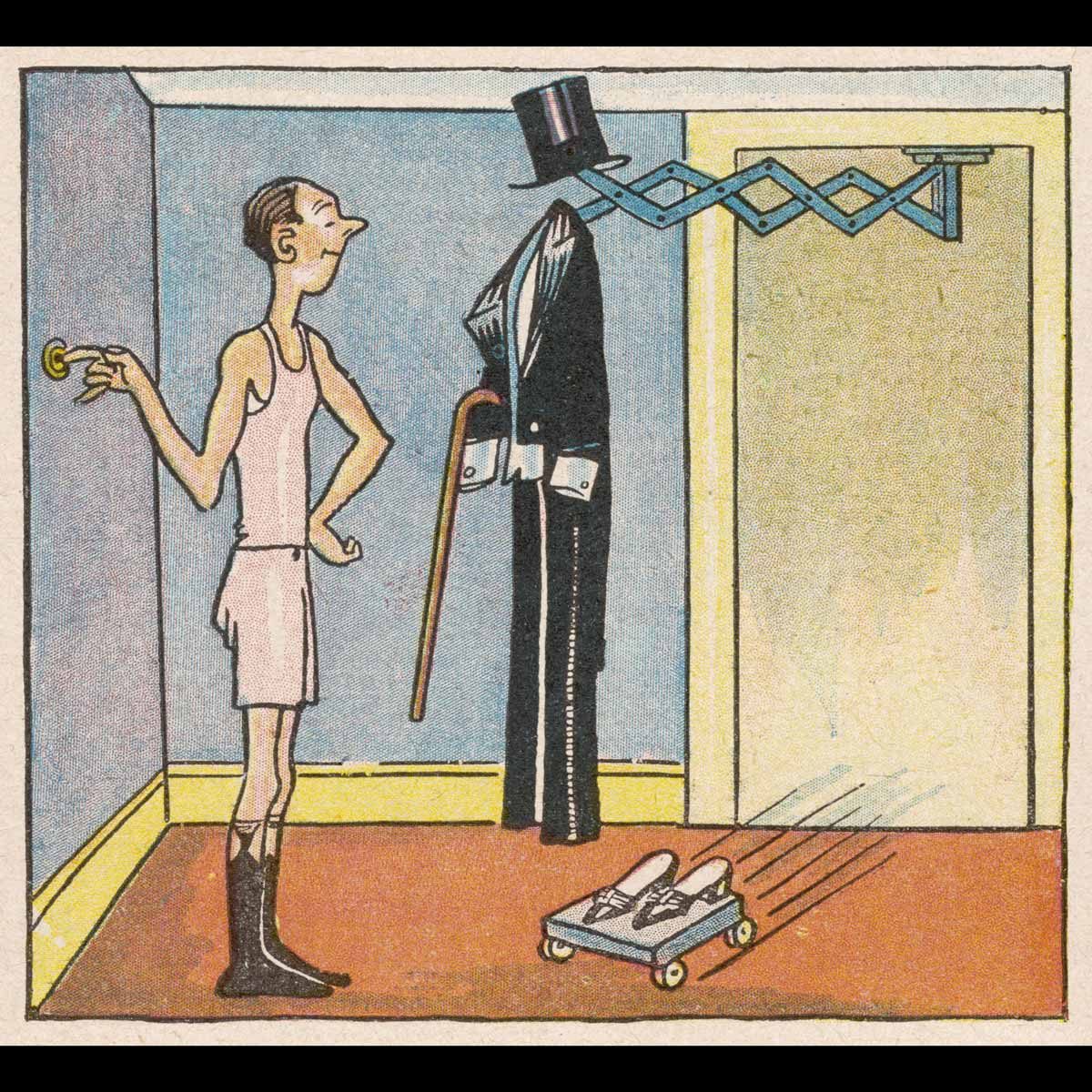
Home Automation, 1929
Prognosticators thought there’d be more convenience at a push of a button back in 1929, like if you needed to get into a tuxedo in a hurry. There’s no push-button laundry service but there is a laundry folding robot on the market you’ve got to see.
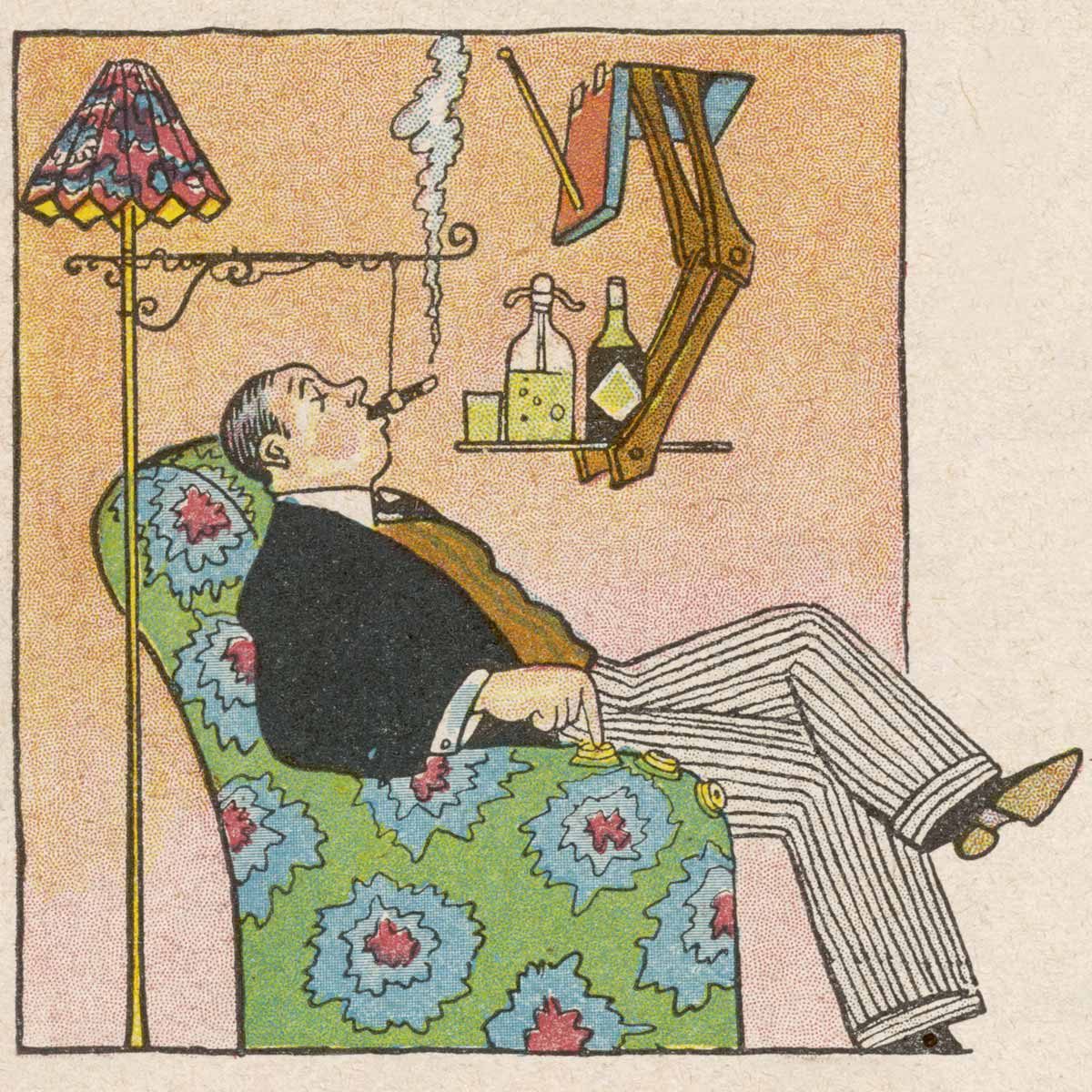
Mechanical Drink Server
Who wouldn’t want a mechanical arm to drop down with a drink in front of them while they sit in a recliner and smoke a cigar? In 1929, this was thought to be the future. Though it’s possible to create in theory, you’re probably better off with a Perfect Drink Pro and brilliant smart appliances. You still have to use your feet to grab the drink or pick up a Segway.
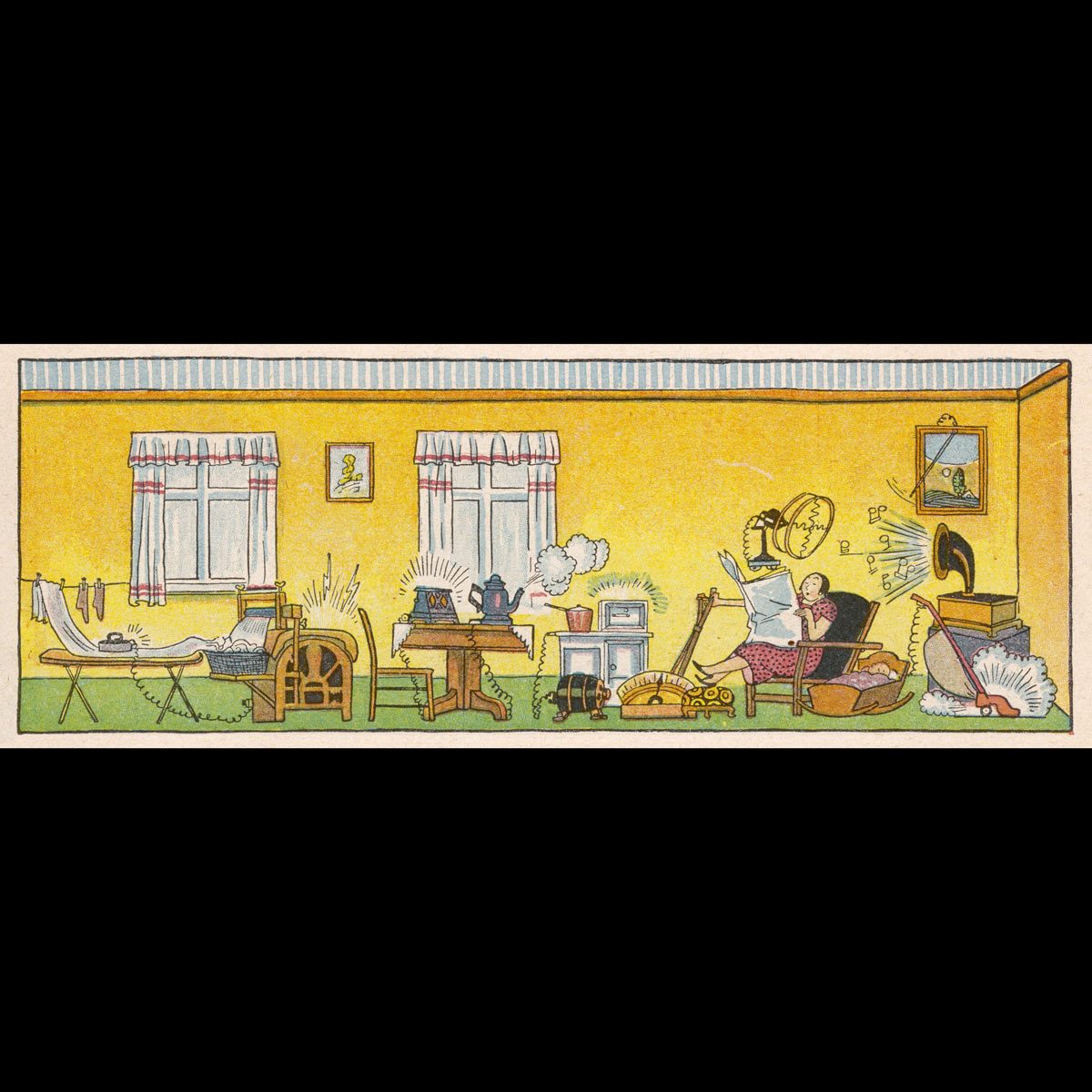
Electric Appliances
By about 1925 around half the homes in the U.S. had electricity and with it came ample ideas to make life easier at home. In this 1929 illustration, electricity provided people with wild ideas like an electric vacuum, electric iron and electric kettle. Housework became so easy that this woman could sit down, read the paper and listen to music. Only if that actually came true, right?
These yard tools will make cleaning up your yard go quicker so you can relax a little bit more.
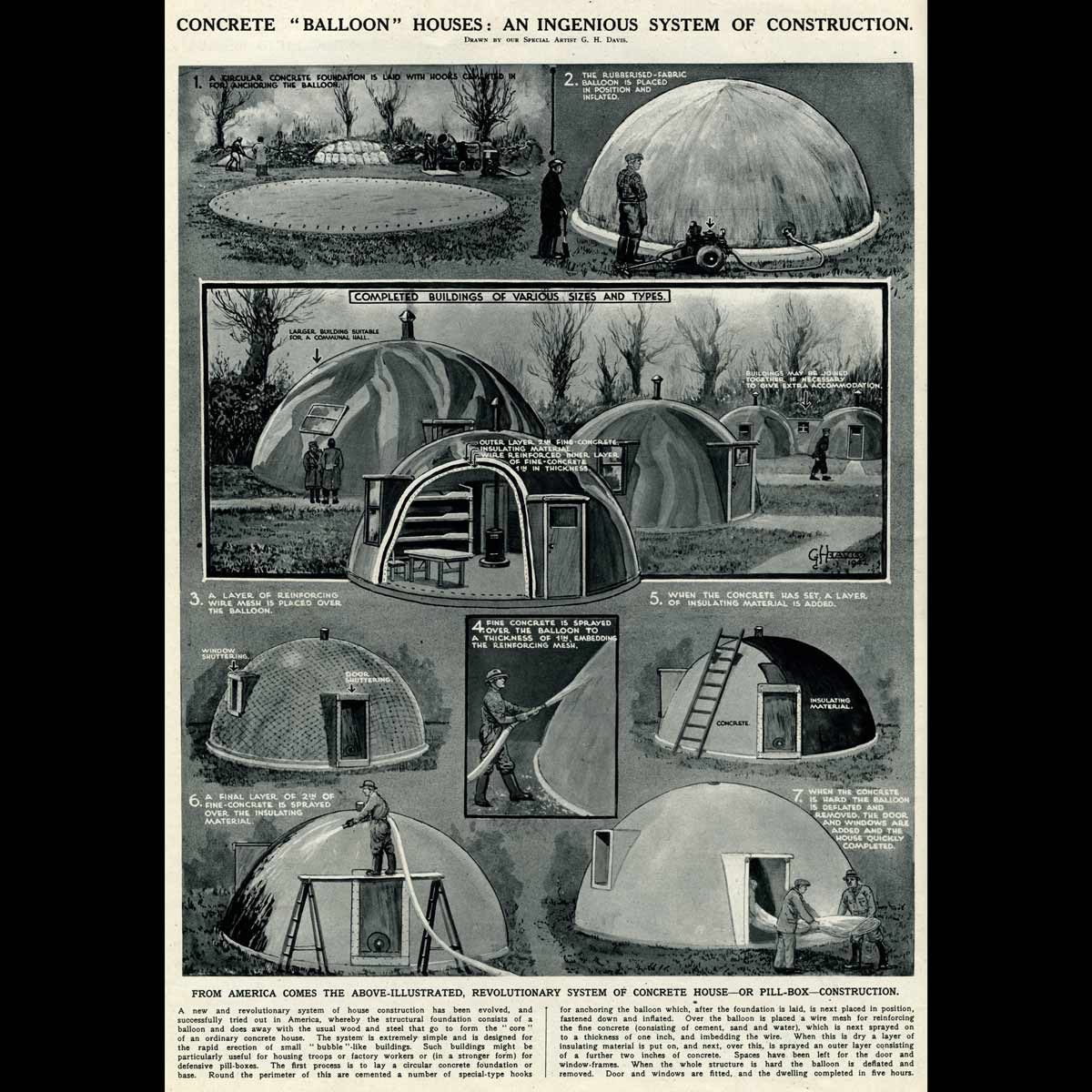
Concrete Balloon Houses
This illustration of a concrete balloon house dates to 1942 and the idea continues to get revamped from time to time. People have even tried usingpolyurethane spray to construct homes. Check out an updated look of the concrete dome house.

